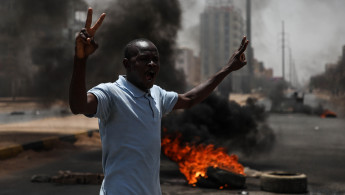Timeline: Sudan's tortuous path to democracy
For nearly 30 years, Sudan was ruled by autocratic President Omar al-Bashir, who came to power in a military coup in 1989.
However, demonstrations which started towards the end of last year signalled the beginning of the end of his time in power.
On December 19, 2018 hundreds of people in the city of Atbara gathered to protest against shortages in bread, fuel and cash.
Many Sudanese saw Bashir's regime as corrupt and the protests soon spread to most of Sudan's cities. The security services responded with deadly force, killing 37 people in six days.
However, this did not stop protesters, led by the Sudan Professionals' Association, marching on President Bashir's palace on Christmas Day.
On January 1, a coalition of opposition groups issued the Declaration of Freedom and Change, calling for the immediate resignation of President Bashir.
Protests continued throughout the next three months despite government repression. On April 6, a "million-man march" was held in Khartoum. Hundreds of thousands of people answered the call to protest and a sit-in began at the military headquarters in Khartoum. It would last for the next two months.
Photos of Alaa Salah, a protester leading revolutionary chants dressed as a "kandaka", a queen of ancient Nubia, go viral around the world.
On 11 April, the military deposed Bashir in response to the protesters' demands. Defence Minister and Vice President Ibn Auf says that power will be handed to an elected government in two years time but imposes a new state of emergency.
The next day Ibn Auf, seen as too close to Bashir, hands power to Lieutenant General Abdul Fattah Burhan, who presides over a military council.
There are scenes of joy in the streets but regime-affiliated militias continue to kill people.
The military and the protesters hold negotiations over the protesters' roadblocks and the transitional period but these stall on 22 April.
Later in May, protesters accuse Saudi Arabia and the UAE of trying to hijack the revolution after Burhan meets the crown princes of the two countries and Egyptian President Abdel Fattah al-Sisi.
On May 28, workers across Sudan hold a two-day strike to pressure the military into agreeing to civilian rule.
On June 4, the ruling military council violently dispersed the sit-in outside the military headquarters. The paramilitary Rapid Support Forces, who are commanded by Mohamed Hamdan Daglo, shoot live bullets at the protesters, killing 108 people.
Sudan's military council says it still wants to hold elections but a peaceful transition to democratic rule seems increasingly uncertain amid the violence.
Click on our Special Contents tab to read more on the Sudan uprising:


![President Pezeshkian has denounced Israel's attacks on Lebanon [Getty]](/sites/default/files/styles/image_684x385/public/2173482924.jpeg?h=a5f2f23a&itok=q3evVtko)



 Follow the Middle East's top stories in English at The New Arab on Google News
Follow the Middle East's top stories in English at The New Arab on Google News


